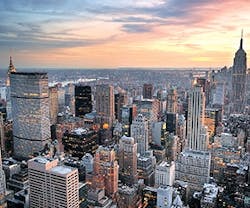Perform Energy Audits and Retrocommissioning – It's the Law
Sustainability is more than a fad or buzzword in New York City – it’s a regulatory effort. To reach its aggressive sustainability goals, New York City enacted the Greener, Greater Buildings Plan, which consists of four local laws.
If you’ve always considered conducting an energy audit and performing retrocommissioning, now is the time to put your plan into action. Local Law 87 dictates that you take these efforts once every 10 years.
To help with this undertaking, the Urban Green Council (NYC’s local USGBC chapter) recently published a user’s guide and checklist.
First determine when you must submit your energy efficiency report to the city. The last digit of your tax block number corresponds to the year in which your report is due.
The energy audit will provide you with some low-hanging fruit opportunities and bigger project ideas.
It is recommended to perform your energy audit one year before it is due. To do so, find a qualified energy auditor. They include NYSERDA consultants, CEMs, and CEAs. Retrocommissioning should begin 12-18 months before it is due, and it requires a licensed architect or engineer.
Urban Green Council also offers tips on how to get the most value out of the reports that your audit and retrocommissioning efforts produce. They include taking advantage of NYSERDA and Con Edison incentives, earning a Building Operators Certificate from the CUNY Building Performance Laboratory, and pursuing training from Green Professional and the Building Performance Institute (available through the Association for Energy Affordability).
For more information or to view the checklist in full, visit www.urbangreencouncil.org.
More Building Laws That Could Affect You
Project sites with construction fences or sidewalk sheds permitted on or after July 1, 2013, must meet new signage requirements that emphasize the type of work underway and highlight the project’s contact information.
The new, standardized construction fence panel and parapet signage designs consolidate permit postings and contractor signage and improve the overall appearance of job sites for communities.
The new law also requires that all other signage be removed and posted within the construction site – except for standpipe signs and any signage required by law to be posted outside the site. In addition, these temporary structures must now be painted hunter green.
For detailed information see Local Law 47 of 2013 at www.nyc.gov.
